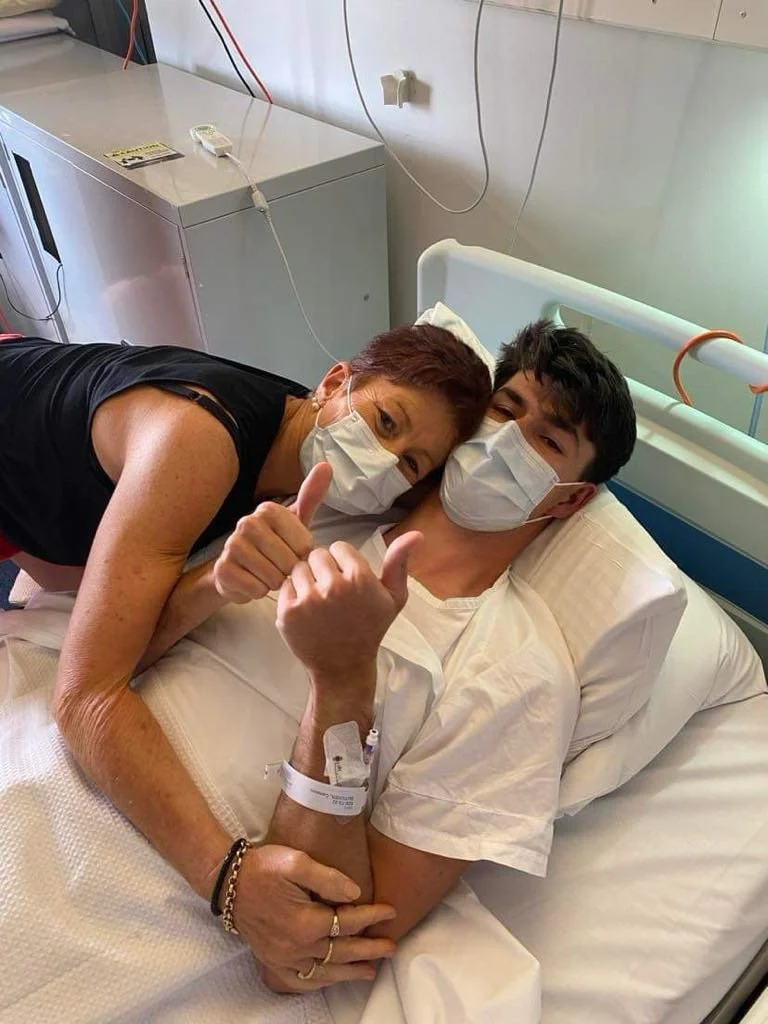Training & Racing After a Heart Transplant: Lessons for All athletes
Hi everyone! Welcome to the Seacliff Coaching blog. These blogs will focus on our experiences through training, racing & coaching, as well as featuring some of our athletes to share their stories.
As many of you may be aware, in November 2024, I successfully received a heart transplant. Now, 9 months on, I thought it would be a great opportunity to share the journey so far!
After over 3 years of not being able to train properly & race a bike, returning has brought some great reminders that can be applied to all athletes & some new lessons. Both of which have been further accentuated by the challenges of a new heart.
New Lessons
The body is extremely adaptive to even the largest of changes:
Having a very important organ in your body replaced is quite a shock to the body; however, having the ability to bounce back & leave the hospital within 13 days looking like you didn’t have a major surgery (apart from losing 10kg in muscle) is remarkable.
The nerves around and attached to your heart are not re-attached to the transplanted heart; therefore, your heart does not respond to exercise as a regular heart. This was the most noticeable in the first few months following the transplant. However, the ability for the heart to rely on other pathways to respond is incredible & in the last few months, this has had minimal effect during my training.
New Expectations
Trying to race at the top-end of the sport & hanging on for dear life trying to keep up with the top riders in the country was a challenge that previously motivated me. Now, due to obvious reasons, my goal posts have had to be shifted. I’m very keen to see how fit & fast I can get back to with the second chance I’ve now been given & aiming for goals old & new!
There is a transplant category at Road Nationals, which I’ll be targeting in January 2026. I can race the adaptive category on the mountain bike & the Australian & World Transplant Games are each held in alternating years! Plenty of new challenges await!
Great Reminders
Managing Fatigue
Comparatively, post-heart transplant, I have had a massive increase in general energy levels as opposed to pre-transplant. However, due to the side effects of some medications & training a new heart in a new body, post-heart-transplant fatigue whilst training has significantly reduced my ability to train any amount of volume on the bike. Thankfully, I have recently stopped taking prednisolone due to my body’s lack of rejection of the new heart and have noticed slightly less fatigue when training. However, there are many great reminders that I have noted to manage fatigue whilst training both on & off the bike…
Fuelling
Minimising fatigue = maximising recovery. To best give my body a chance to battle the side effects of my medication, ensuring I was refuelling after training as soon as possible was vital for me to aim to recover from the session as quickly as possible. My go-to has been Proats with a few other ingredients to ensure I’m covering all the nutritional bases for recovery (carbohydrates, protein, healthy fats & antioxidants).
Secondly, I had to increase my on-bike fuelling (more than I was used to when I was training pre-heart issues) to ensure I was able to give my body a chance to start recovering as soon as I got off the bike. This was not in the way you might think. It wasn’t concerned with the amount of carbohydrates per hour; rather, the fuelling during much shorter rides than I normally would. Training House offer a great range of products to keep you fuelled both on and off the bike!
This leads to my 2nd key lesson for athletes; Don’t look at fuelling for a single session, instead you are fuelling during & straight after that session to ensure you are able to recover as quickly as possible when you finish the session & you are ALREADY fuelling for the next. In turn, this very closely links to my next discussion point.
Keeping Healthy
Having a minimal immune system due to the anti-rejection medication I take comes with its challenges & extra precautions. Endurance Athletes in general often battle to stay healthy due to the constant training stress on the body, lowering their immunity in the process. The immune system is at its lowest point immediately after intense training or racing.
This links back to my previous point in maximising recovery & beginning this process at the end of a ride. By fuelling with that additional gel, oat bar or whatever carbohydrate you prefer in training or racing at the end of a session (last 20 minutes or so) you’re ensuring your body has the best chance of fighting off any sickness. This has been particularly important for me to give myself the best chance of keeping healthy & training consistently!
Proactive Mindset
A few times since my operation, I’ve found myself going into “survival mode”. It can be easy to fall into the trap of just ticking a box & getting things done, both in training & in life. Finding a balance of being proactive & doing the little things can do wonders for your mental & physical health & enjoyment whilst training. This could be as simple as planning your day the night before so you can wake up with a plan of attack, prepping your bike for training the day before or jumping on the roller to roll out that muscle that’s been sore. All these little things can add up to make both your general life & training less stressful & keep you on track for the long run!
If you’re reading this, there is a very small chance you’ve had a heart transplant in your life. However, these lessons can be applied to training and life in general.
Thanks for reading! Hope to see you out on the Road or Trail soon!




